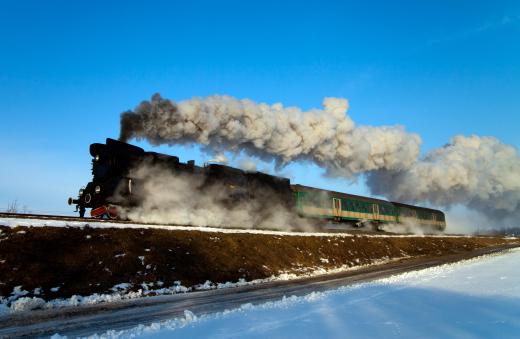Steam drive — also known as steam flooding — is a method of enhanced oil recovery that can dramatically increase the percentage of crude oil that can be removed from a reservoir. Since as early as 1959, steam drive has been used to increase oil production, and by the 21st century, it had become the most popular technique of enhanced oil recovery used by oil companies around the world. The process requires that multiple wells be drilled: production wells that pump oil out of the ground and injection wells that force a continuous stream of steam into the reservoir.
This process is similar to other common enhanced oil recovery practices used by oil companies, most notably cyclic steam injection and water flooding. Cyclic steam injection is nearly identical to steam drive, but the steam is released in bursts rather than as a steady stream. In water flooding, water is injected into the ground to force the oil up and out through production wells. Though more costly — in energy as well as expense — than either of these options, steam drive is far more effective, mainly because of its major advantage of heat.

Because heated oil is less viscous and flows more easily, heated oil fields generally yield much better results than water flooding and cyclic steam injection. Additionally, as heat dissipates into the oil field, the steam condenses into water. Pressure from the hot water — as well as the flow of steam pumping in behind it — displaces the oil, forcing it up through the production wells.

This effect on viscosity is the reason that steam drive is used most frequently on reservoirs where the oil is especially thick and heavy, such as with tar sand. There has been, however, an increase in the use of steam drive on fields with lighter oil, where steam is able to draw a greater percentage of the reserve from the ground. Estimates place the amount of additional oil recovered at 40 percent to 50 percent. This increase must however be weighed against the fuel used to heat the steam, meaning that this method is not appropriate for smaller reserves.
The term "steam drive" also can be used to refer to an engine that relies on steam pressure to produce motion. An example would be the classic steam locomotive. Though primarily viewed as the outdated engine of the Industrial Revolution, its high efficiency and low maintenance have given some people cause to reconsider their use in the 21st century.
